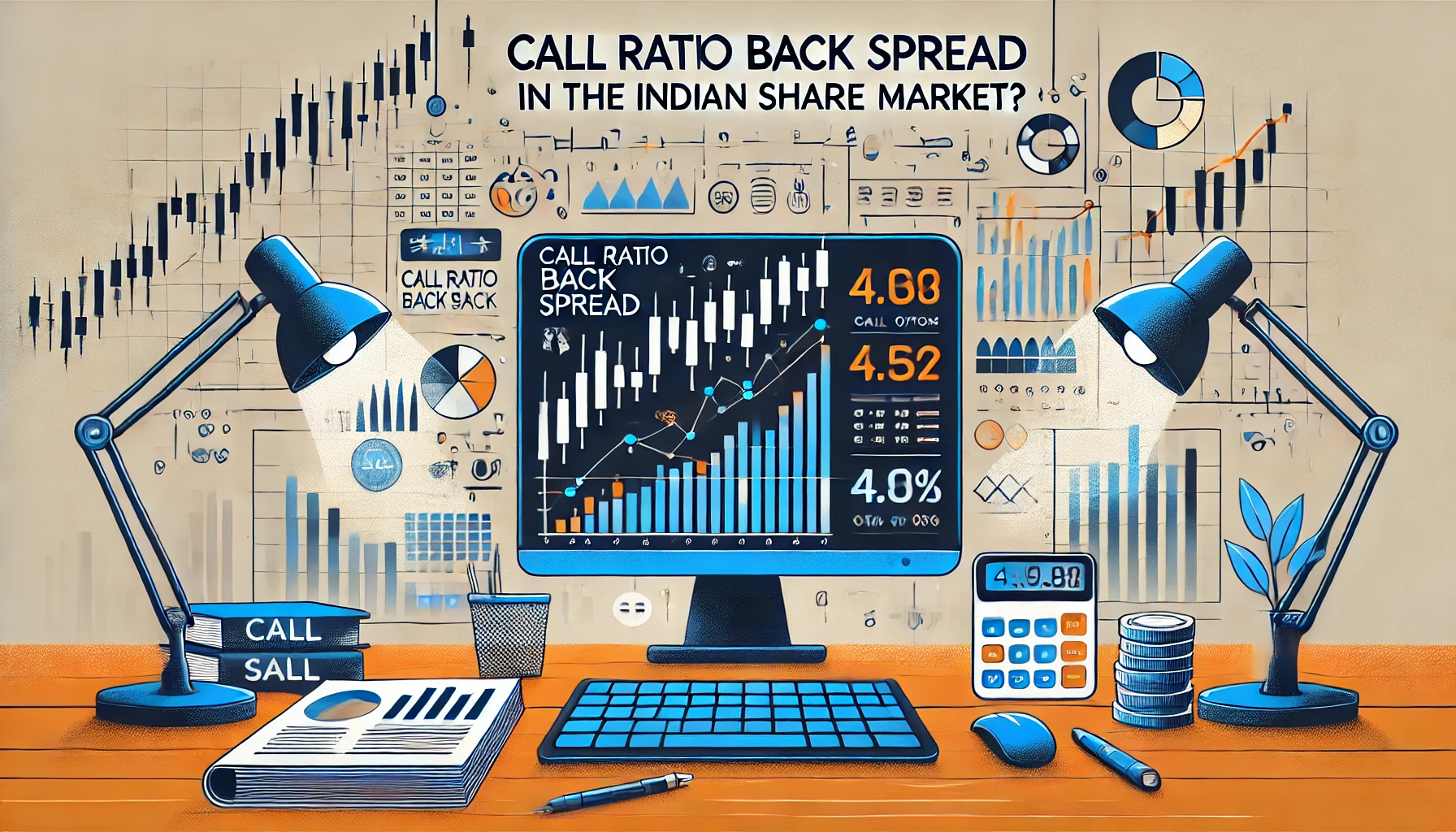Margin funding is a powerful tool in the Indian share market that allows traders to leverage their capital to increase their exposure in the market. It involves borrowing money from a broker to purchase shares, enabling investors to amplify their positions without committing the full value upfront. This technique is popular among seasoned investors aiming to maximize returns in derivatives trading. However, with increased potential for profit comes heightened risk, making it crucial to understand how margin funding works.
In this blog, we’ll delve into the intricacies of margin funding, how it is applied in the Indian share market, its benefits and risks, and provide an overview of historical data and case studies to better illustrate its real-world impact.
What is Margin Funding?
Margin funding is a form of financial leverage where an investor borrows money from a broker to invest in the stock market. By using margin, traders can purchase more shares than they could with their available funds alone. The collateral for this loan is typically the securities purchased or other assets in the investor’s account.
For example, if a trader has ₹1,00,000 and wishes to invest in shares worth ₹2,00,000, they can use margin funding to borrow the additional ₹1,00,000 from their broker. The broker charges interest on the borrowed amount, and the investor benefits from any gains made on the larger investment.
How Margin Funding Works
When an investor opts for margin funding, the broker provides funds to buy shares based on a pre-agreed margin. The margin requirement varies depending on the broker, the stock’s volatility, and the regulatory framework set by the Securities and Exchange Board of India (SEBI).
The process can be broken down into the following steps:
- Opening a Margin Account:
The investor opens a margin account with a broker, which allows them to borrow money to invest in securities. - Depositing Collateral:
The investor deposits an initial amount of money (known as margin) in the account. This acts as collateral against the borrowed funds. - Borrowing Funds:
Based on the margin requirement, the broker lends the investor additional funds, allowing them to purchase more shares than they could with their own capital. - Paying Interest:
The investor pays interest on the borrowed amount. The rate of interest is determined by the broker and can vary depending on market conditions. - Profit or Loss:
If the value of the shares increases, the investor profits from the larger position. However, if the value decreases, the investor is liable for the losses and may receive a margin call from the broker to add more funds or sell shares.
Types of Margin in Margin Funding
- Initial Margin:
The initial margin is the minimum amount of funds that an investor must deposit to open a margin position. It is usually a percentage of the total value of the shares being purchased. - Maintenance Margin:
Maintenance margin is the minimum account balance that an investor must maintain after opening a margin position. If the account balance falls below this level, the broker may issue a margin call, requiring the investor to deposit more funds or liquidate the position. - Margin Call:
A margin call occurs when the value of the securities in a margin account falls below the maintenance margin level. The investor must either deposit more money or sell off assets to bring the account balance up to the required level.
| Type of Margin | Description |
|---|---|
| Initial Margin | Minimum deposit required to open a margin position |
| Maintenance Margin | Minimum balance required to keep the position open |
| Margin Call | Broker’s request for additional funds if the account value drops |
Benefits of Margin Funding
- Leverage for Greater Returns:
Margin funding allows investors to leverage their investments, potentially generating higher returns than they would with only their available capital. - Increased Purchasing Power:
By using margin, investors can purchase a larger number of shares, enabling them to take advantage of market opportunities they would otherwise miss. - Diversification:
Investors can use margin funding to diversify their portfolios without tying up all of their capital in a single investment. - Liquidity:
Margin funding provides liquidity to investors, allowing them to take larger positions without having to liquidate other assets. - Flexibility:
Investors have the flexibility to borrow funds based on their risk appetite, which can be useful in volatile markets.
Risks of Margin Funding
- Potential for Larger Losses:
While margin funding increases the potential for higher returns, it also magnifies losses. If the market moves against the investor, they may be forced to sell their assets at a loss to meet margin requirements. - Margin Calls:
Investors who experience losses may receive margin calls from their broker, requiring them to deposit additional funds or sell assets. If they fail to meet the margin call, the broker may liquidate their position, potentially resulting in significant losses. - Interest Costs:
The interest charged by the broker on the borrowed funds can eat into the investor’s profits, especially if the position is held for an extended period. - Overleveraging:
Overleveraging occurs when an investor borrows too much and is unable to cover potential losses, leading to financial distress.
Historical Perspective: Margin Funding in Indian Markets
Margin funding has evolved significantly over the years in India’s stock market. The early 2000s saw a surge in margin funding as retail investors gained access to leverage. However, this also led to market volatility and liquidity issues. To address these challenges, SEBI introduced stricter regulations to ensure that margin funding was used responsibly.
Key Regulatory Developments:
- 2001: SEBI introduced rules for margin trading to limit excessive speculation in the markets.
- 2018: SEBI implemented new margin norms to reduce volatility and protect retail investors.
- 2021: Peak margin requirements were introduced, mandating that brokers collect full margins upfront to curb intraday leverage.
Margin Funding vs Margin Trading
It’s essential to distinguish between margin funding and margin trading. While both involve borrowing money to trade, they differ in their application:
- Margin Trading: Investors borrow money from their broker to purchase stocks and aim to profit from short-term price movements.
- Margin Funding: Margin funding is typically used for longer-term investments, where the borrowed funds are used to acquire shares that the investor plans to hold for an extended period.
Calculating Margin in Margin Funding
The margin required in margin funding is typically a percentage of the total value of the shares being purchased. This percentage depends on the stock’s volatility and the broker’s terms.
Formula for Margin Funding:
Margin=Total Value of Shares/Margin Requirement Percentage
For example, if an investor wants to purchase shares worth ₹10,00,000 and the broker requires a 25% margin, the investor must deposit:
Margin=₹10,00,000/25%=₹2,50,000
The remaining ₹7,50,000 is borrowed from the broker.
Historical Data: Margin Funding Trends in India
To illustrate the impact of margin funding, consider the historical data of margin positions during key market events. Below is an example of the rise in margin funding during the bull run of 2020–2021, followed by a sharp decline during corrections.
| Year | Average Margin Funding (%) | Market Movement (NSE Index) |
|---|---|---|
| 2019 | 15% | +12% |
| 2020 | 25% | +20% |
| 2021 | 35% | +25% |
| 2022 | 10% | -8% |
Margin Funding in Bull vs Bear Markets
Margin funding behaves differently in bull and bear markets:
- Bull Market:
Investors are more likely to use margin funding to capitalize on rising prices. Leverage amplifies their gains, and margin calls are less frequent as stock prices increase. - Bear Market:
In bear markets, margin funding can lead to significant losses. Investors may receive margin calls as the value of their securities declines, forcing them to either sell shares or deposit additional funds.
Margin Funding Strategies
- Hedging with Margin Funding:
Investors can use margin funding to hedge their existing positions. For example, they may take a long position on one stock while shorting another to balance their risk exposure. - Swing Trading with Margin:
Swing traders often use margin funding to take advantage of short-term price movements in the market. They can quickly open and close positions, using leverage to maximize returns on short-term trades. - Long-Term Leverage:
Some investors use margin funding to acquire shares that they plan to hold for several years. By doing so, they can increase their overall market exposure without tying up too much capital upfront.
Conclusion
Margin funding is a valuable tool for investors in the Indian share market, offering opportunities for higher returns through leverage. However, it also comes with increased risks, including margin calls, interest costs, and potential losses. By understanding the mechanics of margin funding and using it responsibly, investors can enhance their market positions and potentially boost their profits. As with any investment strategy, it’s essential to balance risk and reward and stay informed of the market conditions and regulatory changes that may impact margin funding.

What Is Implied Volatility?
In the realm of Indian share market derivatives, implied volatility (IV) plays a crucial role …

What is Margin Funding?
Margin funding is a powerful tool in the Indian share market that allows traders to …

Forward vs Future contract
In the Indian share market, derivatives such as forward and future contracts play a pivotal …

What is Margin Money?
Margin money is a crucial aspect of trading in the Indian share market, especially in …

What is Put-Call Ratio?
The Put-Call Ratio (PCR) is one of the most widely used indicators in options trading …

What is Derivatives?
Derivatives are financial instruments whose value is derived from an underlying asset or benchmark. In …

What is Cost of Carry?
The cost of carry is an essential concept in futures trading that reflects the cost …

What is futures
Futures are a fundamental part of derivatives trading in the Indian stock market. They allow …

Bullish Option Strategies
In the ever-evolving world of derivatives trading, options have become a powerful tool for investors …

Understanding Physical Settlement in Futures & Options Contracts: A Comprehensive Guide
In the world of derivatives trading, the concept of physical settlement has gained prominence, particularly …

what are call options
The Indian share market has expanded significantly over the years, attracting a growing number of …

What Is Credit Spread Strategy
In the world of options trading, the credit spread strategy is one of the most …

What Is a Forward Contract
A forward contract is a customized financial agreement between two parties to buy or sell …

Types of Derivatives in India
The Indian derivatives market has grown exponentially, becoming a vital tool for investors and traders …

What is Swaps Derivatives
In the world of derivatives, swaps are a special class of contracts that allow two …

Intrinsic Value and Time Value of Options
Options trading is one of the most widely used financial instruments in the Indian share …

What is Open Interest?
In the world of derivatives, the concept of “Open Interest” plays a crucial role in …

Types of underlying assets in derivatives
The Indian derivatives market has grown exponentially over the last few decades, thanks to its …

derivatives on Option Volatility & Pricing Strategies
The Indian share market derivatives segment is a dynamic environment where advanced traders rely heavily …

What is Futures Contract
The Indian share market offers various financial instruments that provide opportunities for investors and traders. …

What is implied volatility in options?
In the world of options trading, one of the most crucial elements to understand is …

Futures Pricing Formula
The Indian share market is known for its dynamic nature and offers various opportunities for …

What is an ITM Call Option?
The world of options trading is filled with technical terms that are crucial for investors …

What is Max Pain Theory?
The Indian share market is full of strategies and theories that traders use to predict …

What is OTM Call Options
In options trading, terms like “in the money” (ITM), “at the money” (ATM), and “out …

What Is Rollover
Rollover is a common term in the world of futures and derivatives trading, especially in …

Futures Prices Converge Upon Spot Prices
In the world of financial markets, futures contracts play a significant role. One of the …

Call Ratio Back Spread
In the Indian share market, advanced trading strategies such as the Call Ratio Back Spread …

Margin Call Meaning
A margin call is one of the most critical warnings in trading, often marking a …

What is Bermuda Option?
The financial markets are full of complex instruments, and one such tool is the Bermuda …


















